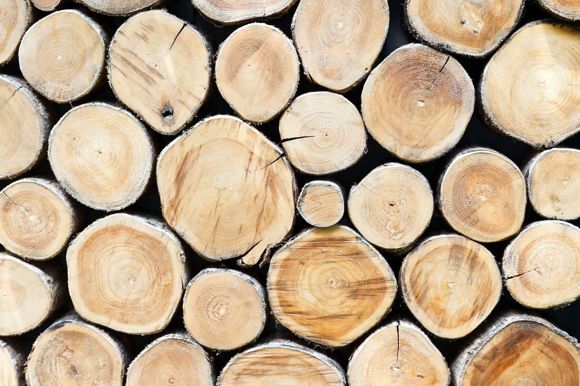
Should natural or artificial wood be used in interior design?
At present, the furniture market will be divided into natural wood and artificial wood. So how to distinguish these two types of wood and when should we use natural wood? When should we consider using artificial wood?
NATURAL WOOD
Furniture made from natural wood is a form of carved wood directly to create the appropriate furniture according to taste. The surface of the product made of natural wood is often carved with very fine lines to enhance the beauty of the product. Pattern, carved shapes also have deep, shallow spot depending on the idea of the sculptor. The wood is clearly expressed and interwoven in harmony. Some types of natural wood used in the interior: Xoan Dao wood, oak wood, mahogany wood, mahogany wood, etc.
Advantages: natural wood is highly aesthetic because of the harmony inherent in the veins and fibers as well as the fine workmanship on each product so often used in the style of furniture classic in. In addition, products made from natural wood also ensure durability and beauty over time.
Disadvantages: high cost due to the amount of natural wood is increasingly scarce or imported directly from abroad, plus the cost of processing for each type of wood is not low. On the other hand, natural wood is easy to warp, shrink if workers have not experienced much in the construction.
WOMAN CREATIVE
With natural wood resources increasingly exhausted, and to meet the demand for wood in the design of interior construction, artificial wood is born, with many kinds of rich, colorful colors, suitable for many Different uses in the formation of living space and work today.
The distinction between natural wood and artificial wood is the texture of wood. Because artificial wood should be protected by a layer of glue and powder to prevent any peeling or peeling, the wood can not be connected to the hips and back to form a homogeneous block such as natural wood.
Some types of artificial wood prevalent today:
Fiber board
Bar stools
Particle board
Synthetic Plywood, MDF MFC
Paste veneer, Melamin, Lamilet vvv ….
Pi Moc will have a clearer introduction on how to distinguish artificial wood
Advantages: industrial wood can ensure the disadvantages that natural wood such as reasonable price, and have the advantage of not warping war can also change the surface of the paint on demand. the customer’s preference. Industrial wood also saves a lot of construction time. With the above advantages, industrial wood is applied increasingly popular today and in accordance with modern interior design style with youthful performance to meet high performance.
Disadvantages: The durability of industrial wood usually lasts up to 10 years in the case of being manufactured in reputable, professional production facilities, skilled workers and must be associated with all kinds of accessories. good quality to avoid affecting the wood material. Another feature to note is that artificial wood often absorbs water so in addition to multi-layered coatings, the user must limit water contact with the wood surface so as not to reduce the life of the interior. Due to the mechanical characteristics of industrial wood and the combination of wood, it is impossible to produce fine details such as natural wood (lines, patterns, patterns …).
Conclusion: Each type of wood has its own advantages and disadvantages depending on the cost and style that investors want to target to choose the suitable wood material.
Pi Moc collectors & collectors
Contact
Pi Moc Décor
Address: 23 Nguyen Anh Thu, Hiep Thanh, District 12, Ho Chi Minh
Hotline: 0909122359 – 0938 005 339
Email: [email protected]


0 comments